The Grey Areas of Teaching Windsurfing
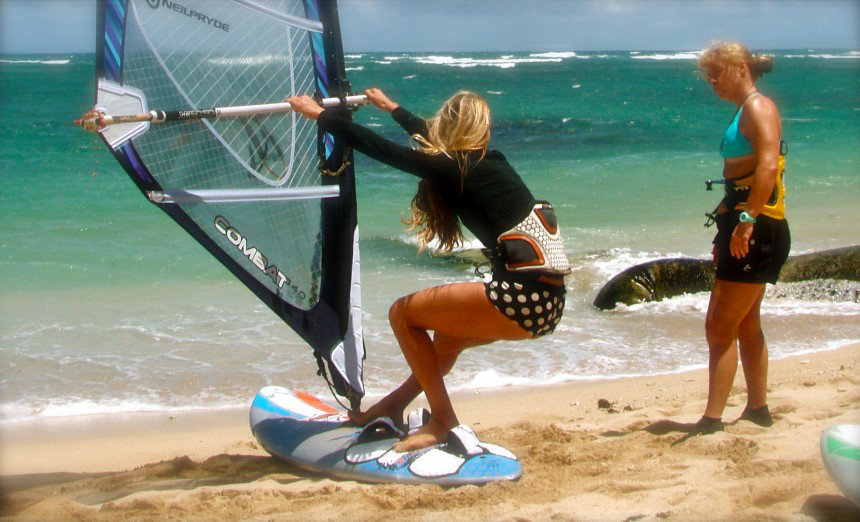
Summer of wind is the trend every year. Waves shrink down to a manageable Ho’okipa two foot while most of the other venues are pretty much flat. Fantastic conditions to learn how to windsurf, to jibe, waterstart and taste Ho’okipa’s waves when they are as docile as a purring kitten. All this teaching and learning makes me ponder the grey areas of windsurf instruction.The questionable right and wrong ways of doing things….
One of my students the other day said she thought,
…it was great to learn different things from different instructors. I don’t think any coach or instructor should think their way is the only way!"
…and I would have to say, I agree with her.
This got me thinking a lot about the gospel of windsurf coaching… Every year different instructors declare themselves to be the ultimate gurus of teaching windsurfing. The all knowing ones who change their absolutes with the ebb and flow of windsurfing fads. I personally don’t believe in absolutes and feel there is always wiggle room on the teaching/learning curve. If there wasn’t how would the newer styles come about if no one broke the ‘rules’ such as for example the trend towards super long harness lines, floaty quads and even smaller sails. If it was so, then Kauli had no idea what he was doing and would have been wrong in the eyes of those same ‘Gurus’.
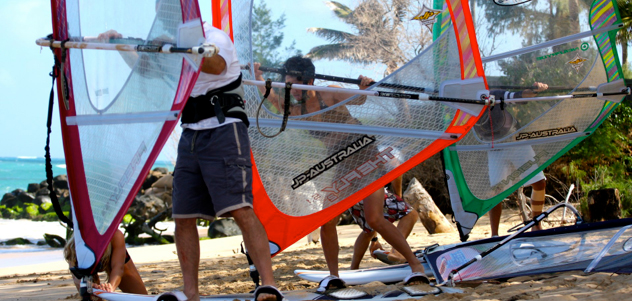
Though I teach I’ve never stopped being a student.. Actually Matt Pritchard and I always say to our windsurfing guests there are nine ways to skin a cat depending on personal style, comfort and conditions as well as your choice of windsurfing disciplines will affect those variables. Matt taught himself how to sail as a child so sometimes he uses techniques that might not be applicable to teaching. We may teach things differently than we actually sail, ( underhand verses overhand grip bla blah blah…) simply because it is easier to learn the technique the way we teach it first…. Later on you can do whatever you want. For example once you know how to ride a bike, riding without using your arm is totally possible and even relaxing but you’d never teach someone how to ride a bicycle without holding on to the handle bars. Everything in good time.
Looking back on my early years of learning to windsurf, my teacher at the time declared that my harness lines should be no longer than my wrist to my elbow, my boom should hover somewhere around my eye balls and insisted I sailed powered up way beyond the realms of control putting me on 5.0 when perhaps a 4.0 would have been enough. But those were the times and going super fast was cool and the absolute. Were they right or wrong? I don’t know. It was right for that head space of the 90’s windsurfing scene. Ideas change, equipment changes, fads change… A few year later while I was sailing in Ireland, Nik Baker came up to me and said my boom was way too high and my harness line were way too short…. Being a good disciple, I looked at Nik like he was a complete idiot because the Guru had spoken to me and I believed in his gospel absolutely… If I’d just listened to Nik I would have found comfort much earlier with a whole lot less catapults. Another reason I think it is prudent to respect and listen to as many different ‘experts’ until you find what works for your personal, shape, style, strength and interest.
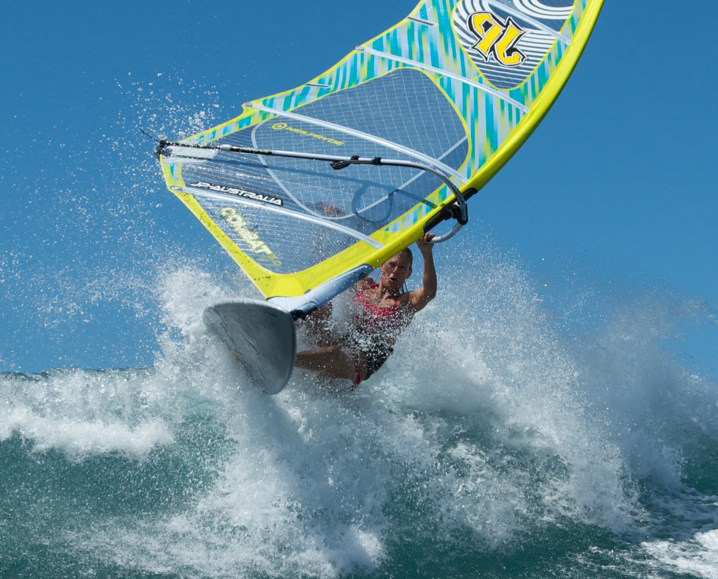
Teaching often reflects personal style as well. There are all sorts of quick fix programs people teach to speed up certain levels of windsurfing which I personally don’t like to promote. Some instructors teach keeping the boom low so it rest on the back of the board to help with water starts. This is not wrong and it does help people get the sail out of the water… But it may also mean once you are up and sailing that the boom is too low so you are not able to sink into the harness properly for correct stance, which in itself creates a whole slew of new problems.
There’s also a trend is places like Maui or Baja to teach water starts without teaching beach starts which is great for places where the wind fills into the beach and where the depth of the water drops off immediately from the shore line. Unfortunately when those people come to a venue where they need to slog out to a wind line or want to try sailing a place like Ho’okipa where it is a super shallow, challenging beach break with fluky winds they can’t go out because they’ve skipped a basic technique to try and jump to the next level. So I personally believing in teaching the fundamentals properly. Some of these techniques might take longer to learn to do them right in the beginning but later down the road the sailor won’t get stuck at a certain level.
I think that learning to fly the sail by picking it out of the water at the tip rather than using the floatation of the board will allow the student to continue on the path of learning faster and faster water starts, thus allowing them to go out in more challenging conditions like waves where taking twenty five minutes to swim their kit around and drag their boom over the back of the board is no longer a good option. I think taking the time to learn the basics well in a consistent windy place is the key to more windsurfing doors being open to students in the future.
There’s nothing wrong with taking a week long holiday just learn to do just one thing right. My tip is to only try something new 5 times in a row… Then go back to doing something that you can already do and brings you pleasure. Then try again only giving yourself five attempts again then go back to something you enjoy. At first you will only get 0 out of 5 attempts. Eventually you’ll notice you’ll get 2 out of 5 attempts until you are successful 5 out of 5 times. This will work for some and not others. For me when I’m trying to learn something new it keeps me focused, It keeps frustration down and stops me from attempting new things when I’m tired and at risk of injury.
Different physical action can create the same result…. Whether you’re twisted forward or squared on to your sail as long as you are sheeting in using your harness it’s all good in the hood. Since I’m most interested in waves and teach on Maui, I teach a stance that is most useful for these sailing conditions and getting upwind. I call it the Twist. It’s a stance where you twist you’re upper body forward to help keep the sail in a balance position which allows you to look around more upwind to see what the wind is doing, spot waves and generally be more aware of other windsurfers around you, etc.. The key is that you are sheeting in using the harness and not trying to muscle the sail with your arms.
Racers on the other hand, who are windsurfing barely on the edge of control, sail more square on to their sail to help handle the power in their sails. Phil McGain came to one of my clinics and demoed to my group his high wind sailing techniques for those who wanted to see his racing stance. More than anything he explained to the group, is that his extremely long harness lines allow him to get ridiculously low. He sailed with both knees completely bent with his upper body curled up like a turtle and his bum just skimmed the surface of the sea. He wins many races like this and it obviously works for him.
I personally don’t race and it hurts my back just looking at Phil’s stance. But I know it works. For wavesailing or plain old freeride I choose a more upright stance but I’m not sailing ridiculously big sails in high winds so I don’t have to sail like that. Sailing at Ho’okpa late last night, Fransisco Goya and I were one of the only ones out and I purposely checked out his sailing stance… His upper body was twisted so far forward… Even more extreme than mine. It reminded me of an owl’s head cocked backwards and it looked nothing like Phil’s stance. Though in all cases we are all committed 100% to our harness and using our weight and not our arms to keep sheeted in whatever our personal stance styles.
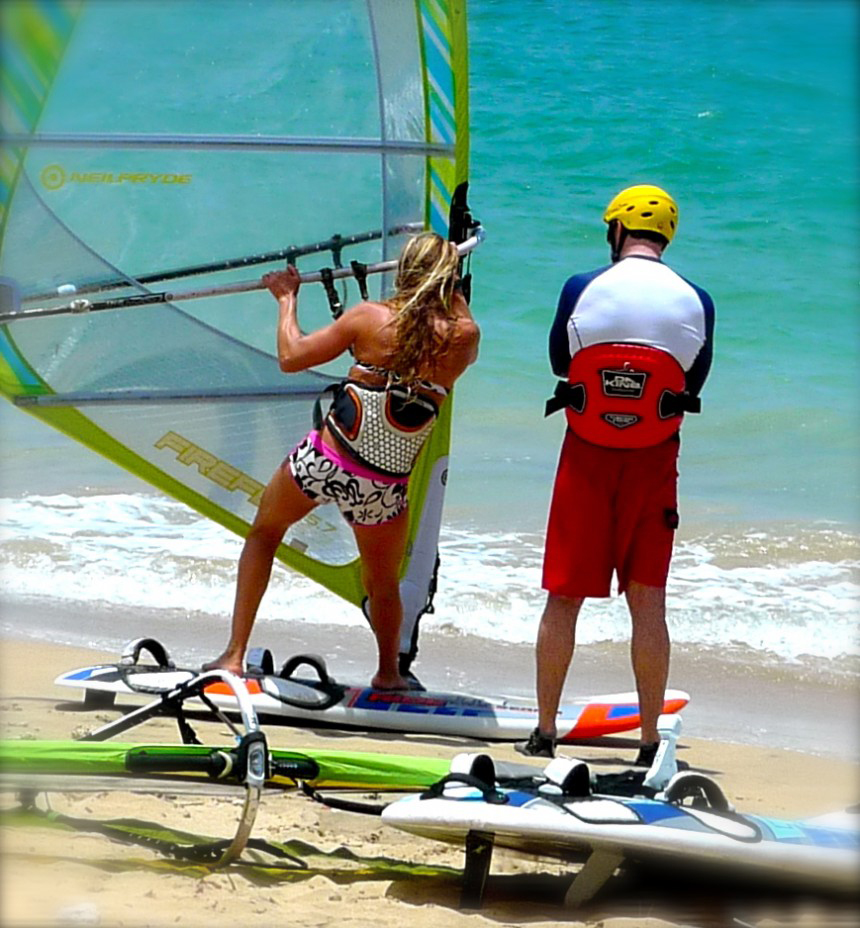
Some people need different tips to succeed at different levels. I was teaching a guy for a week who was 6.2″, sailed fast but out of control. He barely looked up, the sail dropped to the back of the board, and he was sheeting out every time a gust hit him because he was using his arms rather then sinking into the harness. By twisting his upper body forward he stopped dropping the sail back, looking upwind helped him concentrate more on where he was going and to read the winds on the water rather than tensing up when going at speed, etc.. Sometimes I have to exaggerate what I teach in order for our students to find the sweet spot on their own.
And thus I reiterate what I mean by… ‘Different strokes for different folks’. I’d always be wary of anyone who declares it’s their way or the highway style of teaching. Being open minded and trying out different techniques by different instructors will only open your horizons and probably lead you down the path to your own personal comfort and style in what ever windsurfing discipline you eventually get hooked on.
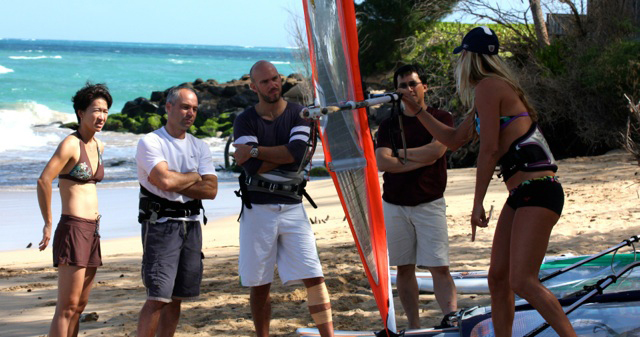

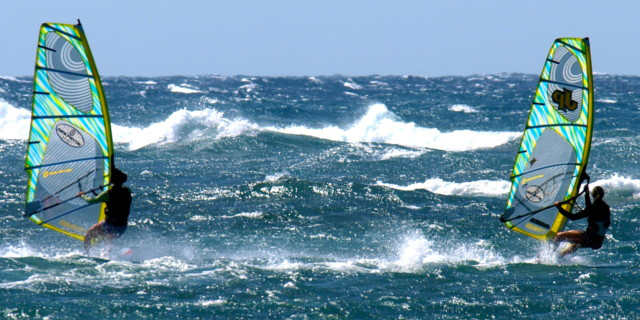


No comments.